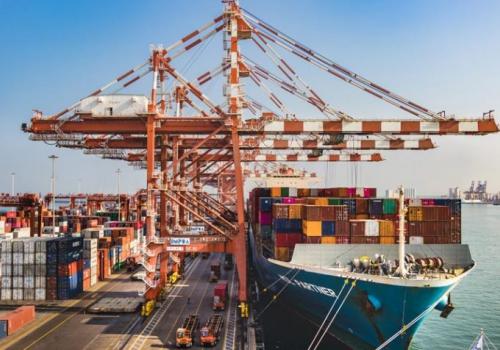Sri Lanka’s imports surged 1.96 billion US dollars in March 2021 from 1.52 billion dollars in February as exports and domestic credit picked up, despite Mercantilist import controls, official data show. “Despite the continuation of the import restriction measures, expenditure on merchandise imports increased significantly in March 2021 to US dollars 1,926 million, which was the highest monthly import value since March 2018, the central bank said. “Accordingly, the import expenditure in March 2021 was significantly high compared to the expenditure of US dollars 1,205 million recorded in March 2020, and US dollars 1,524 million in February 2021. All major sectors of imports contributed to this increase.” Analysts had warned that imports will rise as private and state enterprise credit picked up and import controls were a Mercantilist mistake.
Private credit picked up to 79.4 billion rupees in February from 25.7 in January and rose further to 112.2 billion rupees in March. In March import generally go up due to the upcoming New Year season. However when credit is financed by printed money, foreign exchange shortages and balance of payments deficits take place. State enterprise loans, usually type of consumption credit usually taken to fix oil and power prices under a political and bureaucratic obsession to fix retail prices also directly hit the exchange rate. Private and SOE credit rose from 81.1 billion rupees in January 2021, to 101.3 billion rupees in February and 130.6 billion rupees in March. Private and SOE credit was also 133.3 billion rupees in March 2018, when the central bank said imports last hit this level.
At the time the central bank began printing money under an output targeting exercise, triggering a currency crisis that pushed the exchange rate to 182 by the year end requiring monetary tightening (also known as stop-go policies) killing a fledgling economic recovery. In March 2019 private and SOE credit surged to surged to 156 billion rupees, partly due to panic import covering due to a so-called ‘flexible exchange rate’ episode where the currency is allowed fall rapidly and panic importers into early covering of import bills. The central bank said consumer goods imports grew 42 percent from a year earlier to 379.2 million dollars, intermediate goods grew 61.5 percent to 2.5 billion US dollars and investment goods rose 75.8 percent to 416.5 million dollars.
Sri Lanka has a high savings rate of around 20 percent which analysts say makes it easy to maintain a strong exchange rate and collect foreign reserves. Savings become imports usually through investment credit and consumption credit of state energy enterprises. Exports grew 66.7 percent to 1,093 million dollars. Exports also give more money for residents to spend on imports, but do not undermine the exchange rate or change the trade deficit. Remittances also give more money to import goods without hurting the exchange rate, but it will show up as a Merchandise trade gap. The central bank said the trade deficit grew to 832 million US dollars in March 2021 from 549 million US dollars in 2020.
